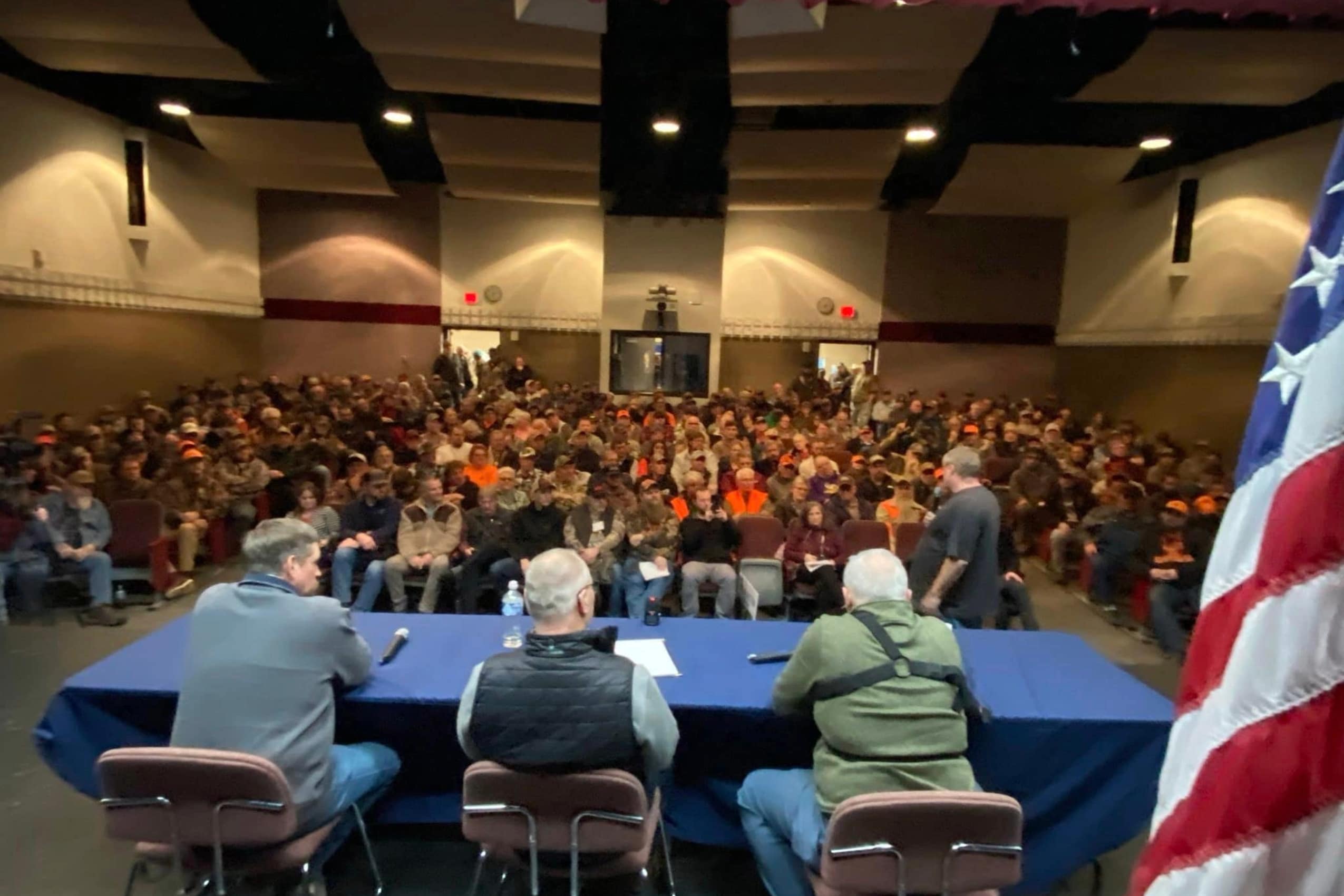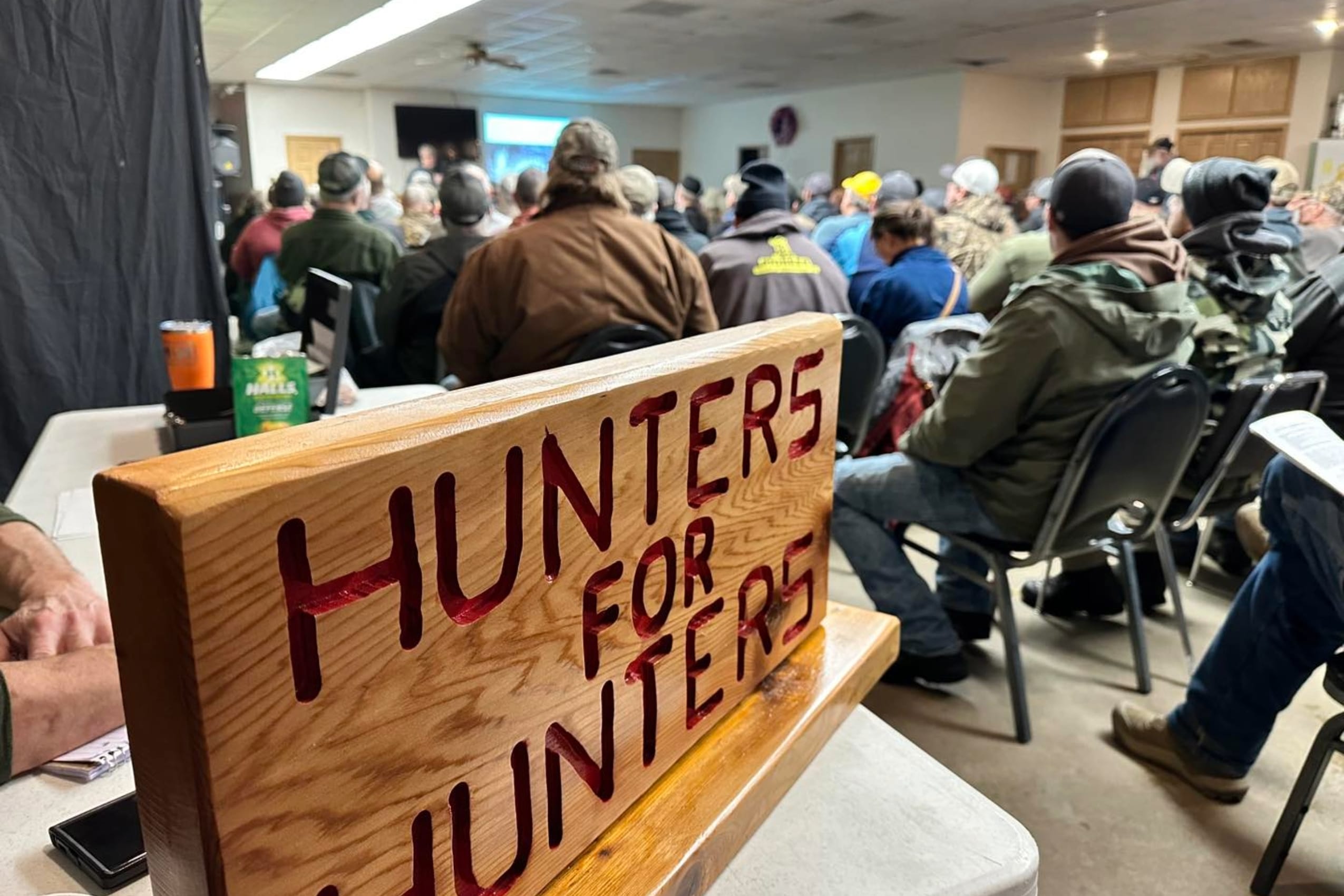
Fifteen years ago, Suzanna Nelson and other frustrated Minnesotans met with Sen. Amy Klobuchar in Washington, DC. to discuss the gray wolf population in Minnesota.
“I asked her [Klobuchar] why one of my kids has to die before someone addresses the problem,” Nelson said.
Along with farmers, hunters and ranchers across the state, Nelson believes the wolf population has gotten out of control over the last 20 years. Some northern Minnesota residents say their pets have been killed by wolves. When a family pet goes missing, Nelson says her kids call it a “wolf snack.”
Wolves have been placed under the protection of the Endangered Species Act off and on over the last several years and are currently a protected species. Unless done in self-defense, killing a gray wolf is a federal crime with a potential penalty of a $25,000 fine, six months in jail, or both.
The Endangered Species Act was designed to help animal species recover when their numbers become too low. Last winter, the Department of Natural Resources (DNR) estimated the Minnesota wolf population to be roughly 2,900.
Discussing the optimal number of wolves, State Sen. Nathan Wesenberg, R-Little Falls, said, “I think our goal was to have 1,200 wolves in Minnesota. We met that goal by the late 1980s. There was no reason to keep the wolves on the endangered species list.”
Sen. Wesenberg has a degree in wildlife biology and has worked with the wolf population at Camp Ripley for 18 years.
“Once they recover, you take them off the list,” said Wesenberg. “The wolf has recovered. If you leave them on [the endangered species list], you have the problems that we’re having right now.”
‘Too many wolves’
Last month, roughly 400 people showed up to a meeting in Willow River to discuss the gray wolf population. Angry ranchers and hunters at the meeting said the gray wolf population has gotten out of hand. According to the ranchers, wolves have killed livestock and pets. Furthermore, the hunters say the wolves are to blame for a smaller number of deer. Congressman Pete Stauber hosted the meeting.
Rep. Stauber is pushing to remove gray wolves from the endangered species list via congressional action. According to Stauber, the U.S. Fish and Wildlife Service announced earlier this month that it won’t make any changes to the gray wolf’s status.
“Friday’s announcement further demonstrates that the Biden Administration is unable to do the right thing, making it more evident that Congressional action is necessary. That’s why I am proud to lead a group of my colleagues in demanding that House Leadership and House Appropriators include language to delist the gray wolf under the ESA in any FY2024 spending package brought before this Chamber,” he said in a recent statement.

“My constituents in northern Minnesota are fed up with the devastating repercussions caused by the dramatic rise in the gray wolf population, which is why I will not stop until the gray wolf is removed from the Endangered Species list and a responsible management plan is enacted in our state.”
In his mission, Stauber is joined by groups such as “Hunters 4 Hunters,” which believes the wolf population needs to be managed. In addition to removing wolves from the endangered species list, the group is pressuring federal and state authorities to open a wolf hunting season.
Hunters, ranchers, and farmers believe there are far more wolves in Minnesota than the 2,900 number claimed by the DNR. As recently as 2022, a federal judge put gray wolves back under the protection of the Endangered Species Act.
Dan Stark, a carnivore specialist with the DNR, says wolves are currently considered a “threatened” species.
“They’re either threatened or endangered,” said Stark. “If they’re threatened, they’re at risk of becoming endangered. If they’re endangered, they’re at risk of becoming extinct.”
According to Stark, Minnesota is essentially the only state amongst the contiguous 48 states that even has a wolf population. The DNR has marked off designated areas in Minnesota where they believe most wolf populations dwell.
Meanwhile, Sen. Wesenberg believes the DNR is undercounting Minnesota’s wolf population. According to the state senator, the wolf population doubles every 15 years.
“If you use the DNR’s math, we had 2,500 wolves in the year 1998. They’ve used that number for 10 years. People are going to stop believing it. If the wolf population doubles every 15 years, 25 years later, we should have 5 to 6,000 wolves at least,” said Wesenberg.
Sen. Wesenberg is in favor of legislation that would allow hunters to hunt wolves. However, he believes left-leaning politicians in St. Paul would not support such an effort. According to Wesenberg, wolves have harmed the deer population, eaten pets, begun eating livestock, and even eaten each other.

“We have too many wolves,” said Wesenberg. “They’ve impacted the deer population and now they’re eating people’s cattle.” Wesenberg continued, “Wolves eat the deer, so there’s less deer. If we have good winters, the deer could probably bounce back a bit. But when you have bad winters with the wolves, there’s just not enough deer to reproduce.”
Sen. Wesenberg says he has seen photos of wolves eating other wolves. Wesenberg believes this cannibalism is evidence that wolves are starving.
The senator fears that if the wolf population isn’t contained soon, then the Twin Cities metro area may begin to see wolves.
“There’s wolves in the metro,” said Wesenberg. “At some point, somebody’s puppy is going to get eaten or killed and that might bring enough outrage down in the metro area where they’re going to push for the same thing (wolf hunting).”
Wesenberg said wolves have a natural fear of humans, but because of the overpopulation they are becoming less fearful and more comfortable with people.
“When they get comfortable with people at some point, there’s going to be a bad interaction between them and humans,” Wesenberg said.
Sheila Qualls
Sheila Qualls is an award-winning journalist and former civilian editor of an Army newspaper. Prior to joining Alpha News, she was a Christian Marriage and Family columnist at Patheos.com and a personal coach. Her work has been published in The Upper Room, the MOPS blog, Grown and Flown, and The Christian Post. She speaks nationally on issues involving faith and family.
















